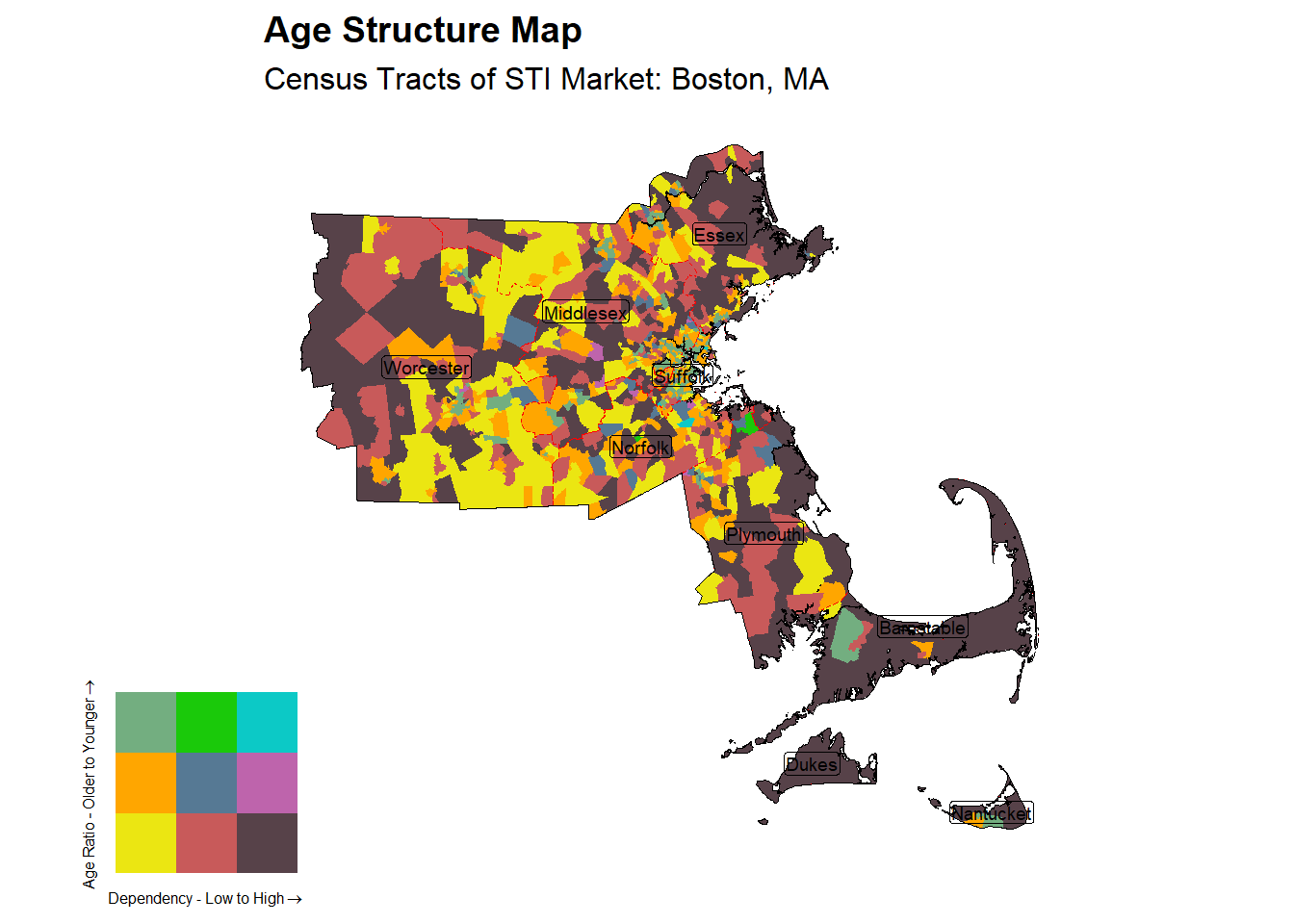Age and Family Structure
This report looks at the Age distribution of the Boston, MA and quantifies the structure in to 9 possible categories. These are based on 2 scales, Dependency and Age Proportion Ratio of the Dependency. Dependency here is the ratio of dependent population, include older dependents over 65 and younger dependents under 15 compared to the 15 to 65 working age population. This measure is often used a way of quantify the amount of strain that the working age population might have in supporting those not working and is sometimes further refined to focus on only those currently working. In this case however we focus only on the age structure. The percentage that the young make up of the dependent population yields the Dependent Age Proportion, with a higher value indicating a younger population.
Market Age Structure Classification: Sunsetting
The Boston, MA market has a dependency ratio of 54.1 which is considered a Low level of dependency. The proportion of that dependent population that is under 15 is 43% and subsequently this market could be age wise considered Elderly. These two classifications in mind the Boston, MA market falls in the Sunsetting Age Structure Classification.
With a Low level of dependency and that dependency skewing older, markets with this structure have likely seen their best days. With a higher proportion of older population and a low amount of children this age structure supports a continued gradual shift to a smaller population. This may have economic ramifications that could cause more young people to leave the area. Retaining the young population of the area and encouraging economic opportunities may increase the markets birth rate. In that regard, out migration of the older population might open up new opportunities for in migration of a younger population. If a Sunsetting age structure continues the area is likely to see continued gradual population decline. If the birth rate or the in migration of a younger population increases this market might shift to a Stable structure. If that is a large influx or more likely coupled with an out migration of older population this market could see a return to a Prospering structure.
STI Markets Comparison - Age Chart
The lines on the following chart are the break points used for structure classifications. For dependency on the X axis they are 56 and 61. For the age proportion of younger dependents (out of young <15 and old dependents >65) on the Y axis they are at 55% and 45%.

Figure 17: Age Structure Classification for STI Markets



